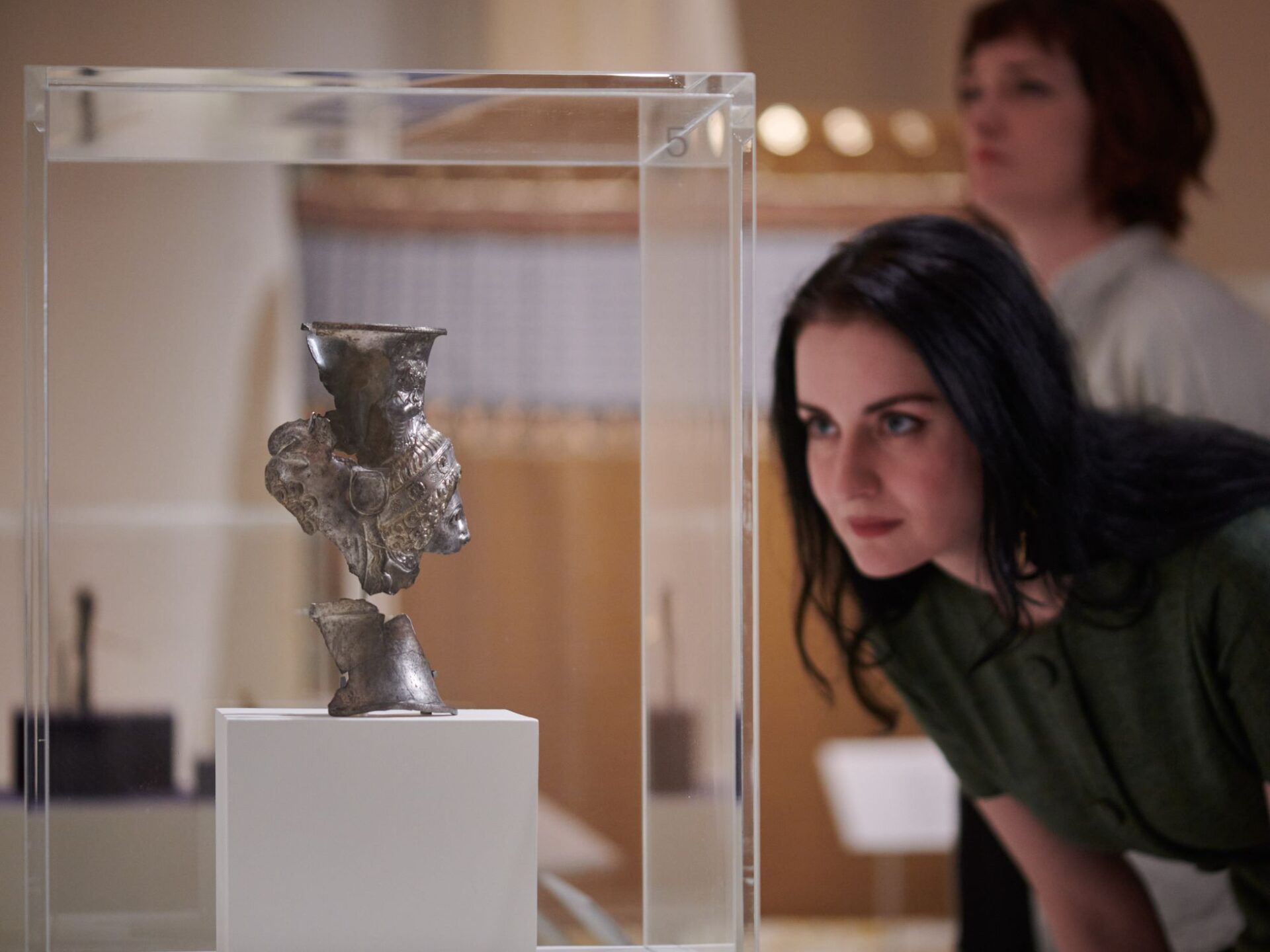The exhibition ‘Luxury and power: Persia to Greece’ traces the symbols of 500 years of an empire and the cultural synthesis that Alexander the Great achieved
First comes the admiration, then the conquest, then contempt, followed by imitation and plagiarism. There, it becomes clear that no one ever fully conquers, and no one is ever fully defeated. After proclaiming himself to have won the Battle of Platea against the Persians in 479 A.C., the Spartan general Pausanias entered the camp of the emperor Xerxes, where he found “tents full of gold and silver furniture… bowls, goblets, and cups, all made of gold,” writes the historian Herodotus. “Surrounded by embroidered tapestries… he could barely believe what his eyes saw.”
The father of history contributed to the Persian stereotype that justified the Greek victory. “The keywords are contained in that last phrase, ‘he could barely believe what his eyes saw.’ That was a world based on perception, and Herotodus steers us toward a story that explains how the small network of city-states that were the Greeks achieved such spectacular victories in their fight against the biggest empire known until then, which lay in wait from its eastern border,” explains James Fraser, curator for Ancient Levant and Anatolia at the British Museum and one of those behind the exhibition Luxury and power: Persia to Greece. “When they found this world of refinement, the conclusion of the text was clear: no one was surprised that the Persians had lost. They had become corrupt, weak and effeminate because of a life of luxury. They had become a decadent people,” Fraser says.
Through decorative objects and luxury utensils, collected from the different corners of that empire — from present-day Greece to Asia Minor, on the Turkish coast, passing through Italy, Afghanistan or Bulgaria —, the museum recounts how the Achaemenid dynasty founded by Cyrus II the Great used, for more than 500 years, the brilliance and seduction of jewels, tableware and clothing to establish and mark its political authority. The satraps who ruled the Persian domains imitated this luxury, albeit with more modest budgets. Tyrian purple, or royal purple, which Phoenician artisans in Lebanon and North Africa extracted from the murex sea snail, was a color associated with power at the Achaemenid court. A cuneiform tablet from Iraq contains instructions for achieving a similar color through plant extracts — the imitation of luxury as an aspiration for power.
“The history of luxury encompasses much more than the binary tale of Persia and Greece. What’s more, that Greco-Persian world was actually a network of hundreds of groups with different cultures. And this exhibition helps to understand how the different styles of luxury connected those cultures, despite the political borders that divided them,” explains the director of the British Museum, Hartwig Fischer.
The only drawback in the exhibition is the decoration of silk gauze and false Greek columns, which give the appearance of a theme park against the material displayed. The displays show off rings, bracelets, necklaces and plates, alongside the stars of the show: the elaborate rhytons, or pouring glasses, of gold and silver, that the Persian aristocracy used in their libation ceremonies, to drink an exquisite wine — without watering it down, unlike the Greeks. In one hand, diners held the rhyton, and in the other the deep plate into which the broth was poured little by little. Balance was a symbol of elegance and measure. “I always think of Coco Chanel’s phrase, the French designer: ‘Luxury begins where necessity ends.’ If you are using these delicate vessels to pour the wine, clearly the rite goes beyond necessity. It is a way of celebrating the authority of the Persian monarch, who collects the most delicate resources and uses the best craftsmen that exist throughout his empire,” explains Fraser.
From Greek modesty to Alexandrian luxury
The exhibition contains several pieces of the Thracian treasure from Panagyurishte, the Bulgarian city where the Deikov brothers, who were digging to extract clay in 1949, found more than six kilos of gold in the form of rhytons, amphoras and oenochoes (wine jugs), all decorated with scenes from Greek mythology and Homer’s Iliad.
Greek contempt for the Persians did not encompass their luxury and refinement. The wealthy classes imitated — with moderation — a style and elegance they admired. “Nothing in excess,” said the inscription on the Temple of Apollo at Delphi. Athens, for example, rose in power and wealth after the Greco-Persian wars, and lavish items from the East arrived in abundance. Personal ostentation was considered a threat to stability and social order, however, so the Athenians sought ways to imitate, in clay and less noble metals, the sophistication of their political enemies.
Alexander the Great brought a sort of synthesis. His sculptures imitate the splendor of the Persian emperors or the Egyptian pharaohs. He defeated an empire, forged one of his own, raised a new Hellenic era in which he retained some of the Persian governors or satraps, established his court in the tent of Darius III, and embraced the luxury and symbols of power that the ancient Greeks had so hated. The Panagyurishte treasure, from the Thracian court, is a reflection of this synthesis, as is the pure gold funerary crown from Turkey, the central object of the exhibition, which demonstrates the acceptance of luxury in the confines of the Alexandrian empire after his death in 323 B.C.
At the entrance to the exhibition, like a challenging hieroglyph, two glass showcases face the busts, in stone and bronze, one of a Persian with ringlets and a snailed beard — presumably smeared with perfumed oil — and one of the Greek god Apollo, with a simple and youthful face. Simple and pure Greece against decadent Persia? It is not so clear: both sculptures were discovered in Cyprus. They come from the 5th century B.C. and it is very possible that they shared a temple, because Apollo and the plague god Resef were worshiped in the same place.
“Now we suffer the calamities of a long peace. Luxury has settled among us, crueler than combat, thus avenging the world we once conquered. Dirty money imported foreign modes and mannered wealth that corrupted our era with sickening decadence,” wrote the Roman poet Juvenal. His words close an exhibition with a moral: luxury is irresistible, but it needs a culprit to justify its excesses.
Source: English Elpais







